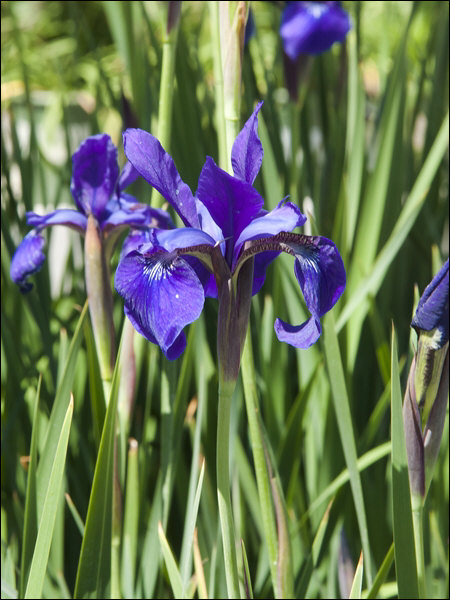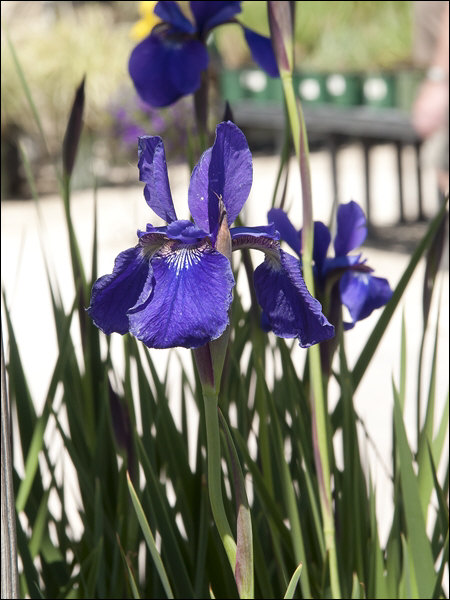| Description | Caesars Brother Siberian Iris is a widely used and one of the oldest cultivars of Siberian Iris. |
|---|---|
| Pronunciation | (EYE-ris) (sy-BEER-ah-kuh) |
| Plant Type | Perennials Hardy, Bulbs, corms, tubers, rhizoms, etc., Site author's observations |
| Hardiness Zone | (3)4-9 |
| Sunlight | full to light shade |
| Moisture | average, prefers moist but has been drought tolerant for me |
| Soil & Site | average, prefers moist humus rich |
| Flowers | dark purple, end of May early June |
| Fruit | 4 valved seed pod |
| Leaves | linear cattail-like leaves, foliage holds up after blooming, can get a nice yellow fall color |
| Stems | small rhizomes |
| Dimensions | 36 inches tall by 1/2 spread |
| Maintenance | Divide the plants in August to September into clumps with at least 3-5 eyes. Fan back the foliage 50% or more. Older plants become more difficult to divide because of the deep fibrous root system and as they age the plant forms a solid mass of white roots. I was talking to a gal that runs a small perennials nursery and she uses a small reciprocating saw for dividing old clumps |
| Propagation | division |
| Cultivar Origin | Hybridized by F. Cleveland Morgan (1882-1962), prior to 1953, Canada |
| Author's Notes | If you are looking for a perennial that will live forever, Siberian Iris are about as close as you can get. Out of bloom the plant has a nice vertical structure of cattail like leaves |
| Notes & Reference | #40 Herbaceous Ornamental Plants (Steven Stills). #125-The Siberian Iris (Currier McEwen), The American Iris Society web site |

Cart


